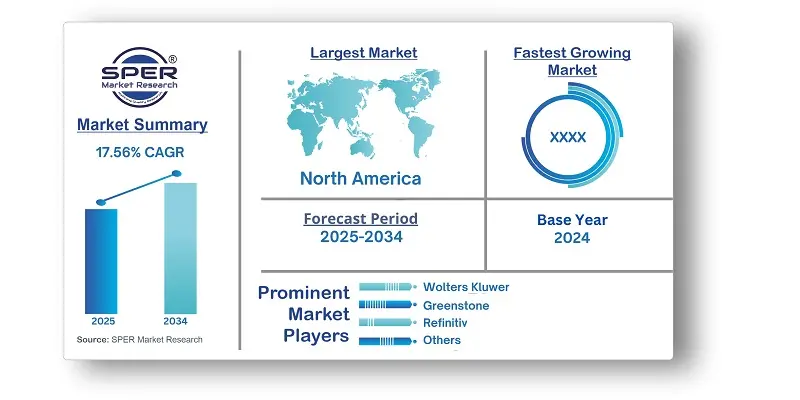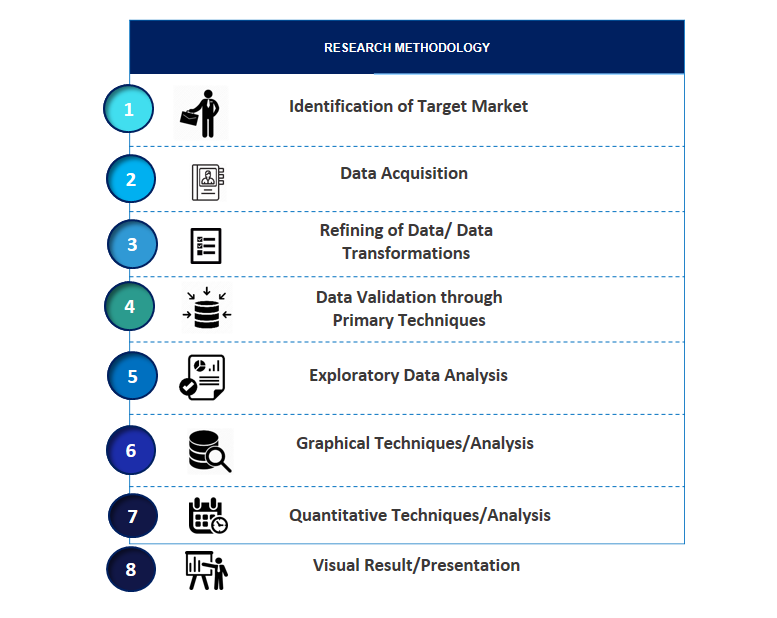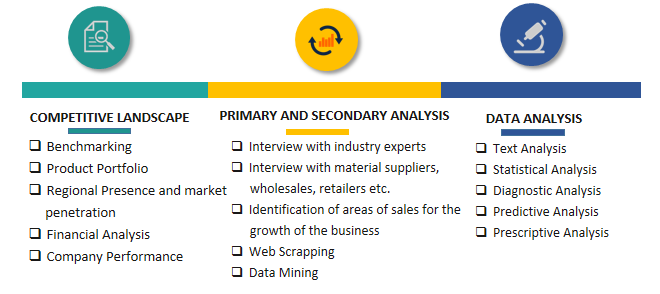ESG Reporting Software Market Introduction and Overview
According to SPER Market Research, the Global ESG Reporting Software Market is estimated to reach USD 5575.79 million by 2034 with a CAGR of 17.56%.
The report includes an in-depth analysis of the Global ESG Reporting Software Market, including market size and trends, product mix, Applications, and supplier analysis. The global Environmental, Social, and Governance (ESG) reporting software market is expanding rapidly, due to a number of important drivers. One significant catalyst is the growing regulatory demand on corporations to adopt complete ESG reporting standards. Governments and regulatory agencies are enacting stronger requirements requiring extensive and frequent ESG disclosures, leading businesses to invest in specialised IT solutions to assure compliance and transparency. Nonetheless, the market confronts significant obstacles. One important impediment is the lack of standardized ESG reporting systems, which causes inconsistencies and challenges in data integration across businesses and geographies. This unpredictability affects organizations' capacity to generate comparable and transparent ESG reporting, which may undermine stakeholder trust.

By Component Insights: The Global ESG Reporting Software Market is divided into services and solutions based on their component type. The services segment is predicted to be the most prominent during the projection period. This is because the program includes analytical services that help businesses and researchers make educated judgments. This is what drives the growth of the ESG reporting software industry.
By Deployment Insights: The Global ESG Reporting Software Market is divided into two deployment types: on-premises and cloud-based. The cloud section is projected to be the largest during the forecast period. The growth is linked to cloud-based software, which can aid with ESG data management via remote access, eliminating the need for physical installation and the costs associated with installation and maintenance.
By Vertical Insights: The Global ESG Reporting Software Market is categorized by vertical, including BFSI, IT and ITeS, government and public sector, manufacturing, retail and consumer goods, healthcare and life sciences, energy and utilities, and others. Manufacturing is predicted to be the largest segment during the projection period. This is because manufacturing facilities are recognized to have some of the most significant environmental consequences. ESG reporting software can assist businesses in monitoring and developing environmental impact assessments, as well as taking efforts to estimate carbon footprint measurements and decrease waste, among other things. ESG reporting software can also help industrial divisions identify their risks and serve as an internal consultation tool, protecting the organization from incurring additional expenses or losses.
By Regional Insights: North America is expected to be the largest region in the global ESG reporting software market over the forecast period. The growth is attributable to North America's developed countries, like the United States and Canada, which are important software development hubs. The region is also noted for its ecological activities, which are further aided by ESG reporting tools.
Market Competitive Landscape:
The Global ESG Reporting Software Market’s competitive landscape is characterized by intense innovation, technological advancements, strategic collaborations, and a focus on expanding diagnostic capabilities to enhance patient outcomes. Some of the key market players are Wolters Kluwer, Nasdaq, PwC, Workiva, Refinitiv, Diligent, Sphera, Novisto, Greenstone, Intelex.
Recent Developments:
- In March 2023, PwC and Sphera established a strategic agreement to accelerate the expansion of their premier ESG management platform. By combining PwC's strategic consulting knowledge with Sphera's technological strengths, the alliance aims to increase platform adoption and create a more robust ESG digital ecosystem for customers.
- In June 2022, Nasdaq increased its ESG solutions by acquiring Metrio, a company that provides software for collecting, reporting, and analyzing ESG data. This acquisition brings Metrio's software-as-a-service platform into Nasdaq's ESG solutions portfolio, expanding its investor relations and ESG offerings.
Scope of the Report:
| Report Metric | Details |
| Market size available for years | 2021-2034 |
| Base year considered | 2024 |
| Forecast period | 2025-2034 |
| Segments covered | By Component, By Deployment, By Vertical. |
| Regions covered | North America, Latin America, Asia-Pacific, Europe, and Middle East & Africa. |
| Companies Covered | Wolters Kluwer, Nasdaq, PwC, Workiva, Refinitiv, Diligent, Sphera, Novisto, Greenstone, Intelex. and others. |
Key Topics Covered in the Report:
- Global ESG Reporting Software Market Size (FY’2021-FY’2034)
- Overview of Global ESG Reporting Software Market
- Segmentation of Global ESG Reporting Software Market By Component (Services, Solutions)
- Segmentation of Global ESG Reporting Software Market By Deployment (On-premises, Cloud-based)
- Segmentation of Global ESG Reporting Software Market By Vertical (BFSI, IT and ITeS, government and public sector, manufacturing, retail and consumer goods, healthcare and life sciences, energy and utilities, Others)
- Statistical Snap of Global ESG Reporting Software Market
- Expansion Analysis of Global ESG Reporting Software Market
- Problems and Obstacles in Global ESG Reporting Software Market
- Competitive Landscape in the Global ESG Reporting Software Market
- Details on Current Investment in Global ESG Reporting Software Market
- Competitive Analysis of Global ESG Reporting Software Market
- Prominent Players in the Global ESG Reporting Software Market
- SWOT Analysis of Global ESG Reporting Software Market
- Global ESG Reporting Software Market Future Outlook and Projections (FY’2025-FY’2034)
- Recommendations from Analyst
1. Introduction
1.1. Scope of the report
1.2. Market segment analysis
2. Research Methodology
2.1. Research data source
2.1.1. Secondary Data
2.1.2. Primary Data
2.1.3. SPERs internal database
2.1.4. Premium insight from KOLs
2.2. Market size estimation
2.2.1. Top-down and Bottom-up approach
2.3. Data triangulation
3. Executive Summary
4. Market Dynamics
4.1. Driver, Restraint, Opportunity and Challenges analysis
4.1.1. Drivers
4.1.2. Restraints
4.1.3. Opportunities
4.1.4. Challenges
5. Market variable and outlook
5.1. SWOT Analysis
5.1.1. Strengths
5.1.2. Weaknesses
5.1.3. Opportunities
5.1.4. Threats
5.2. PESTEL Analysis
5.2.1. Political Landscape
5.2.2. Economic Landscape
5.2.3. Social Landscape
5.2.4. Technological Landscape
5.2.5. Environmental Landscape
5.2.6. Legal Landscape
5.3. PORTERs Five Forces
5.3.1. Bargaining power of suppliers
5.3.2. Bargaining power of buyers
5.3.3. Threat of Substitute
5.3.4. Threat of new entrant
5.3.5. Competitive rivalry
5.4. Heat Map Analysis
6. Competitive Landscape
6.1. Global ESG Reporting Software Market Manufacturing Base Distribution, Sales Area, Product Type
6.2. Mergers & Acquisitions, Partnerships, Product Launch, and Collaboration in Global ESG Reporting Software Market
7. Global ESG Reporting Software Market, By Component (USD Million) 2021-2034
7.1. Solutions
7.2. Services
8. Global ESG Reporting Software Market, By Deployment (USD Million) 2021-2034
8.1. On-Premises
8.2. Cloud
9. Global ESG Reporting Software Market, By Vertical (USD Million) 2021-2034
9.1. BFSI
9.2. IT and ITeS
9.3. Government and Public Sector
9.4. Manufacturing
9.5. Retail and Consumer Goods
9.6. Healthcare and Lifesciences
9.7. Energy and Utilities
9.8. Others
10. Global ESG Reporting Software Market, (USD Million) 2021-2034
10.1. Global ESG Reporting Software Market Size and Market Share
11. Global ESG Reporting Software Market, By Region, (USD Million) 2021-2034
11.1. Asia-Pacific
11.1.1. Australia
11.1.2. China
11.1.3. India
11.1.4. Japan
11.1.5. South Korea
11.1.6. Rest of Asia-Pacific
11.2. Europe
11.2.1. France
11.2.2. Germany
11.2.3. Italy
11.2.4. Spain
11.2.5. United Kingdom
11.2.6. Rest of Europe
11.3. Middle East and Africa
11.3.1. Kingdom of Saudi Arabia
11.3.2. United Arab Emirates
11.3.3. Qatar
11.3.4. South Africa
11.3.5. Egypt
11.3.6. Morocco
11.3.7. Nigeria
11.3.8. Rest of Middle-East and Africa
11.4. North America
11.4.1. Canada
11.4.2. Mexico
11.4.3. United States
11.5. Latin America
11.5.1. Argentina
11.5.2. Brazil
11.5.3. Rest of Latin America
12. Company Profile
12.1. Wolters Kluwer
12.1.1. Company details
12.1.2. Financial outlook
12.1.3. Product summary
12.1.4. Recent developments
12.2. Nasdaq
12.2.1. Company details
12.2.2. Financial outlook
12.2.3. Product summary
12.2.4. Recent developments
12.3. PwC
12.3.1. Company details
12.3.2. Financial outlook
12.3.3. Product summary
12.3.4. Recent developments
12.4. Workiva
12.4.1. Company details
12.4.2. Financial outlook
12.4.3. Product summary
12.4.4. Recent developments
12.5. Refinitiv
12.5.1. Company details
12.5.2. Financial outlook
12.5.3. Product summary
12.5.4. Recent developments
12.6. Diligent
12.6.1. Company details
12.6.2. Financial outlook
12.6.3. Product summary
12.6.4. Recent developments
12.7. Sphera
12.7.1. Company details
12.7.2. Financial outlook
12.7.3. Product summary
12.7.4. Recent developments
12.8. Novisto
12.8.1. Company details
12.8.2. Financial outlook
12.8.3. Product summary
12.8.4. Recent developments
12.9. Greenstone
12.9.1. Company details
12.9.2. Financial outlook
12.9.3. Product summary
12.9.4. Recent developments
12.10. Intelex
12.10.1. Company details
12.10.2. Financial outlook
12.10.3. Product summary
12.10.4. Recent developments
12.11. Others
13. Conclusion
14. List of Abbreviations
15. Reference Links
SPER Market Research’s methodology uses great emphasis on primary research to ensure that the market intelligence insights are up to date, reliable and accurate. Primary interviews are done with players involved in each phase of a supply chain to analyze the market forecasting. The secondary research method is used to help you fully understand how the future markets and the spending patterns look likes.
The report is based on in-depth qualitative and quantitative analysis of the Product Market. The quantitative analysis involves the application of various projection and sampling techniques. The qualitative analysis involves primary interviews, surveys, and vendor briefings. The data gathered as a result of these processes are validated through experts opinion. Our research methodology entails an ideal mixture of primary and secondary initiatives.


